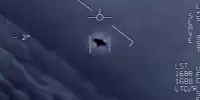It is heartbreaking to see SPAC accords fall apart after they have combined. As founders, employees, and investors who still own shares in the newly public organizations watch their money decrease, you can visibly feel your dreams dissipate into disappointment. Disasters are not limited to one industry. This is not an appropriate target for SPAC, Insurrect. No. What is 3D printing? It does not seem to be in good condition. Apartment building hardware and software is not like that either. A mixed bag but with some disappointing results.
SPACs were successful in bringing a number of businesses and unicorns’ public faster than they could have done on their own. However, once the fanfare has died down and actual, post-debut life begins, the results are showing to be absolute garbage so frequently that I am willing to declare the SPAC boom a failure.
A unicorn company, often known as a unicorn startup, is a private company having a market capitalization of more than $1 billion. There are almost 900 unicorns on the planet as of January 2022. Airbnb, Facebook, and Google are examples of former unicorns. A decacorn is worth more than $10 billion, and a hectocorn is worth more than $100 billion. To learn more about each company’s valuation, investors, and other details, download the whole list today.
What do you mean by “failure”? SPACs will not be the chariots that transport enough unicorns across the private-public market split and begin to reduce the swelling number of pricy former startups collecting by the exits of Startup Land in this way. That will not work because the outcomes are too unpleasant.
The unicorn swarm, the fact that the number of unicorns continues to rise year after year is one of the most quietly pressing challenges in technology investing today. This means that venture capitalists and other private-market investors cannot take companies public as quickly as they can produce paper wealth, 944 unicorns are awaiting an exit, according to Crunchbase, with CB Insights reporting a slightly higher figure of 959. As a result, several trillions of dollars of wealth are lying on the sidelines of the financial markets, waiting to summon. In addition, SPACs had a chance to help.
















